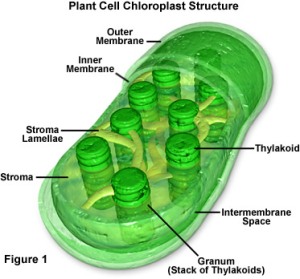Definition of Photosynthesis, Reaction Process and Kinds, Please Read This Guys
Selasa, 01 Maret 2022
Definition of Photosynthesis, Reaction Process and Kinds, Please Read This Guys
Photosynthesis is known as a food synthesis process which is owned by green plants and some photosynthetic microorganisms. Organisms that are able to synthesize their own food are called autotrophs. Autotrophs in the food chain are the producers. In principle, the components needed in the photosynthesis reaction are CO2 which comes from the air and H2O which is absorbed from the soil. In addition, as the name implies, this photo "light" reaction requires sunlight as energy in the manufacture or synthesis of products (sugar compounds and oxygen).
According to Stone (2004), the photosynthesis reaction can be interpreted that six carbon dioxide molecules and six water molecules react with the help of sunlight energy to be converted into one glucose molecule and six oxygen molecules. Glucose is a molecule formed as a result of the photosynthesis process in which the conversion of sunlight energy is stored in the form of chemical bonds that make up the molecule. Glucose is a carbon compound that is later used with other elements in cells to form other chemical compounds that are very important for these organisms, such as DNA, proteins, sugars and fats. In addition, organisms can utilize the chemical energy stored in the chemical bonds between the atoms making up glucose as a source of energy for processes in the body.

Like other organisms, plants are composed of cells as the basic building blocks of plant life. Plant cells contain structures called chloroplasts (Chloroplasts) which are the site of photosynthesis. Chloroplasts are special organelles owned by plants, oval in shape and contain chlorophyll (chlorophyll) which is known as leaf green substance. All parts of plants that are green structures, including stems and fruits have chloroplasts in each of their constituent cells. But in general, photosynthetic activity occurs in the leaves. Michael W. Davidson in his website states that the density of chloroplasts on the leaf surface of a plant averages about one and a half million per square millimeter.
Chloroplasts have a double membrane structure, namely an outer membrane and an inner membrane which are separated by an intermembrane space. The inner membrane of the chloroplast undergoes structural modifications called thylakoids (thylakoids) and then the stacks of thylakoids are called grana. The matrix in the chloroplast is a gel structure called the stroma (Stone, 2004).
Photosynthesis has two kinds of reactions, namely light reactions and dark reactions. During the light reaction, chlorophyll along with other pigments in the chloroplast absorb sunlight energy and convert it into chemical energy which is stored in the chemical bonds that make up glucose. The absorbed energy is electron-rich energy which will later be involved in a series of chain reactions called electron transport. According to Stone (2004), water through the light reaction will be broken down (photolysis) into protons, electrons and O2. The protons and electrons resulting from this split combine with the electron acceptor compound NADP+ (nicotinamide adenosine dinucleotide phosphate) to form NADPH. Some protons move through the chloroplast membrane, and the energy formed is in the form of ATP (Adenosine Triphosphate). NADPH and ATP are components that enter into the dark reaction (Calvin cycle), which converts a Co2 molecule into a three-carbon sugar molecule. Chemical energy from the conversion of sunlight energy is stored in these carbon compounds.
source: https://wordbiology.wordpress.com/2009/02/11/fotosynthesis/
